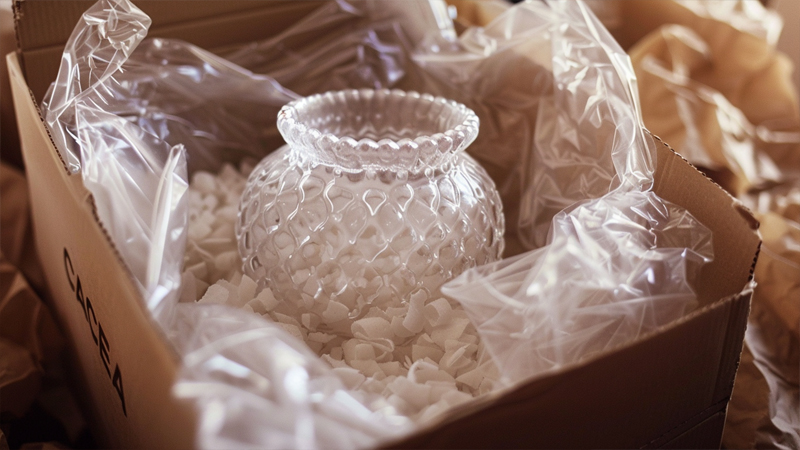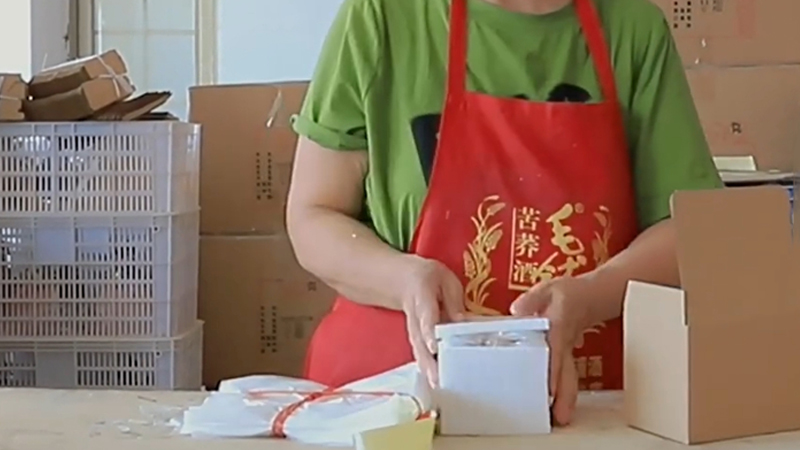
Shipping resin vases can be tricky, but with the right techniques, you can ensure they arrive safely and in perfect condition.
The best way to ship resin vases involves using double-boxing, adding cushioning materials, selecting the right carrier, and ensuring insurance and tracking for peace of mind.
Now, let's take a closer look at how to ship your resin vases the safest way.
What is the best way to ship resin vases?
There are a few essential steps you can take to protect your resin vases during shipping and ensure they arrive undamaged.
Double-boxing, cushioning materials, selecting reliable carriers, and adding tracking and insurance will ensure your resin vases arrive intact.

Shipping resin vases is an art, and getting it right is crucial if you want your beautiful pieces to arrive in one piece. The first step is to double-box your vases. This method involves placing your resin vase inside a sturdy box and then putting that box inside a larger box with extra padding around it. Double-boxing significantly reduces the risk of damage because it adds an extra layer of protection.
Next, you’ll want to make sure you’re using the right cushioning materials1. I recommend bubble wrap, foam peanuts, or even air cushions to wrap your vase tightly. The goal here is to ensure there is no shifting inside the box that could lead to breakage.
Then, selecting the right shipping carrier becomes crucial. Some carriers are more reliable than others when it comes to handling fragile items. I’ve found that major couriers like UPS and FedEx offer better services for fragile goods than others.
Finally, tracking and insurance are essential. Shipping insurance provides peace of mind knowing that if something does happen, you’re covered. Tracking lets you monitor the journey of your resin vase and ensures it reaches the destination safely.
What are the double-boxing techniques for extra protection?
Double-boxing is one of the most reliable techniques to protect fragile items like resin vases. Let’s break down how to do it effectively.
Double-boxing involves placing the vase in a box, then securing it in a larger box with extra padding to prevent damage.

Double-boxing is one of the best ways to ensure the safety of your resin vases during shipping. It’s pretty simple but incredibly effective.
Here’s how to do it: First, wrap your vase in a layer of bubble wrap2 or foam to cushion it. Then, place the wrapped vase inside a small box that fits it snugly. You want the vase to have no room to move around inside the box.
Next, find a larger box that’s about 2–3 inches bigger in every direction than the smaller box. Add a layer of cushioning material3 (foam peanuts, crumpled paper, or air pillows) to the bottom of the larger box, then place the smaller box inside. Finally, fill any remaining space around the smaller box with more cushioning to ensure the vase won’t shift or get jolted during transport.
By double-boxing4, you give the vase two layers of protection: one from the smaller box and one from the larger box. This drastically reduces the chances of breakage from mishandling or rough treatment during transit.
What cushioning materials should be used to prevent breakage?
Choosing the right cushioning material is a critical step in ensuring your resin vase arrives safely. Here’s what works best.
Bubble wrap, foam peanuts, and air pillows are the best cushioning materials to prevent breakage and protect delicate resin vases.

Cushioning is key when shipping fragile items like resin vases. If your vase isn’t cushioned properly, it can shift around inside the box, leading to cracks or even breakage.
Here are some of the best materials you can use to protect your vase:
- Bubble wrap: This is the most commonly used cushioning material because it provides excellent protection. Wrap your vase in several layers of bubble wrap, paying special attention to the delicate areas.
- Foam peanuts: These tiny foam pieces fill the empty spaces around your vase. They act as a cushion and help prevent the vase from moving inside the box.
- Air pillows: Air pillows5 are lightweight but provide strong protection against impact. They can be used to fill gaps in the box, making sure your vase is snug and secure.
All these materials work well, but a combination of them is often the best approach. For example, wrap your vase in bubble wrap, then place it in a box filled with foam peanuts or air pillows.
The goal is to ensure the vase can’t move inside the box, even if the package is jostled around during transit.
How do you select the right shipping carrier?
Not all shipping carriers are the same, and choosing the right one can make a big difference. Let’s see which ones are best for shipping resin vases.
UPS, FedEx, and other major carriers offer better handling for fragile items like resin vases. Choose one with care.

When it comes to shipping fragile items like resin vases, the choice of carrier is just as important as the packaging itself. Some carriers handle delicate shipments better than others, so it’s important to do your research.
I’ve personally found that UPS6 and FedEx7 are reliable when it comes to fragile items. They have more advanced tracking systems, better customer service, and are generally more careful with sensitive shipments. Another great option, especially for international shipping, is DHL8, which has a strong reputation for handling fragile goods worldwide.
Before shipping, always ask your chosen carrier about their policies on fragile items. Some carriers offer extra services, like fragile item handling or special packaging options, which can be worth the extra cost.
What tracking and insurance options provide peace of mind?
Tracking and insurance are crucial for shipping fragile items. Let’s see why you should never skip these steps.
Tracking ensures you know where your vase is, and insurance provides peace of mind in case of damage during transit.

Tracking and insurance are essential when shipping resin vases, especially if they’re valuable or irreplaceable.
Tracking lets you monitor the package’s journey, so you can see when it’s in transit, when it’s out for delivery, and when it’s arrived. This helps you stay informed and communicate with your customer if any delays occur.
Insurance, on the other hand, is peace of mind. Accidents happen—packages can get lost, damaged, or delayed. By insuring your shipment, you protect your investment. If something goes wrong, you’ll be reimbursed for the value of your vase.
I always recommend choosing insurance for fragile items9, as it’s relatively inexpensive compared to the cost of replacing a damaged vase. It’s one of those things you don’t want to skip, especially if the vase is one-of-a-kind or custom-made.
Conclusion
Shipping resin vases safely requires careful packaging, the right materials, and choosing a reliable carrier with insurance and tracking.
-
Exploring the best cushioning materials will enhance your shipping strategy, minimizing the risk of damage to your vases. ↩
-
Discover the effectiveness of bubble wrap in shipping and how it can be used to protect your valuables. ↩
-
Learn about various cushioning materials that can enhance the safety of your shipments and prevent damage. ↩
-
Explore this link to understand the benefits of double-boxing and how it can safeguard your fragile items during shipping. ↩
-
Discover the role of air pillows in protecting fragile items and ensuring safe delivery. ↩
-
Explore UPS's policies to ensure your fragile items are handled with care during shipping. ↩
-
Learn about FedEx's approach to fragile shipments to make informed shipping decisions. ↩
-
Discover why DHL is a preferred choice for international shipping of fragile items. ↩
-
Learn effective strategies for shipping fragile items to prevent damage and ensure safe delivery. This resource is invaluable for shippers! ↩





